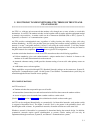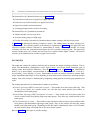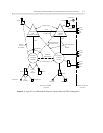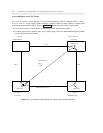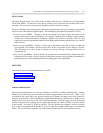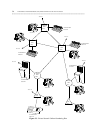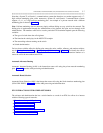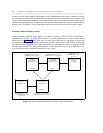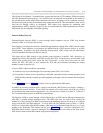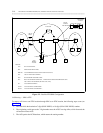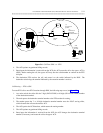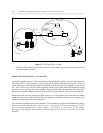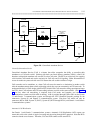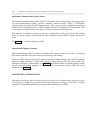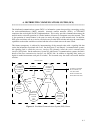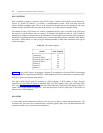ELECTRONIC TANDEM NETWORK (ETN) THROUGH THE ETN AND PNA PACKAGES 5-9
_ ______________________________________________________________________________________
_ ______________________________________________________________________________________
_ ______________________________________________________________________________________
Like System 85 and Generic 2 communications systems that function as ETN tandems, ENP nodes require
the ETN (Standard Network) package. At every ENP node, all extensions are identified by the number of
the node where they reside and the trunk connection to that node. In routing a call to a particular extension,
the internal dial plan provides the destination node, rather than the RNX. The node number is then used to
route the call through AAR to its destination. ENP clusters may substitute for subtending main
satellite/tributary (MS/T) networks in an ETN and are recommended for ISDN implementations because
MS/T trunks are not compatible with ISDN signaling.
Software-Defined Network
Software-Defined Network (SDN) is service through which companies can use AT&T long distance
facilities as links in a virtual private network.
Each company’s virtual private network is defined through databases resident at the AT&T network control
point (NCP). These databases cross-reference the number that the AT&T network receives to an SDN
routing number. In addition, they hold information through which AT&T screens calls for authorization
codes and identifies the features available to the call.
Calls enter and exit SDN through a long distance point-of-presence (a metallic, DS1, microwave, or
multiplexing facility) that functions as the SDN serving office (SO). From there they are forwarded to the
AT&T action control point (ACP), where the calls is processed. As calls arrive at the ACP, the ACP
informs the NCP. The NCP, in turn, furnishes the ACP with the information (including the routing
number) it needs to route the call.
Access to SDN is either switched or nonswitched.
• Switched access is provided through a local exchange carrier (LEC) class 5 office.
• Nonswitched, or direct, access is provided by a dedicated connection from the customer premises to the
AT&T SO either through customer-provided equipment or through a line the customer has leased from
the LEC.
See the Trunking section of chapter 1 for details on how to administer the SDN trunks.
In addition to providing customers with a virtual private network, SDN facilities can enlarge a company’s
current private network facilities. In fact, SDN can transmit calls to and receive calls from any existing
private network that meets interface requirements. Any of DIMENSION, System 85, System 75, or Generic 1
and 2 communications systems can fulfill these requirements.
The interface to SDN is usually through a switch functioning as an ETN tandem, although communication
with SDN is possible through intelligent mains. The SDN caller does not need to know whether the
number he or she is dialing is an SDN location because the numbering plan can be set up so it is uniform
across both the ETN and SDN networks. To access SDN, the ETN tandem passes to SDN a 7- (RNX-
XXXX) or 10-digit (NPA-NXX-XXXX) number. SDN finds the call destination and delivers a 0- to 7-digit
number to the destination ETN tandem with the call. Figure 5-5 shows a feasible configuration for a
ETN/SDN hybrid network. Note that, although ETN and DCS software can coexist on the same switch,
DCS clusters cannot include SDN without losing feature transparency.



